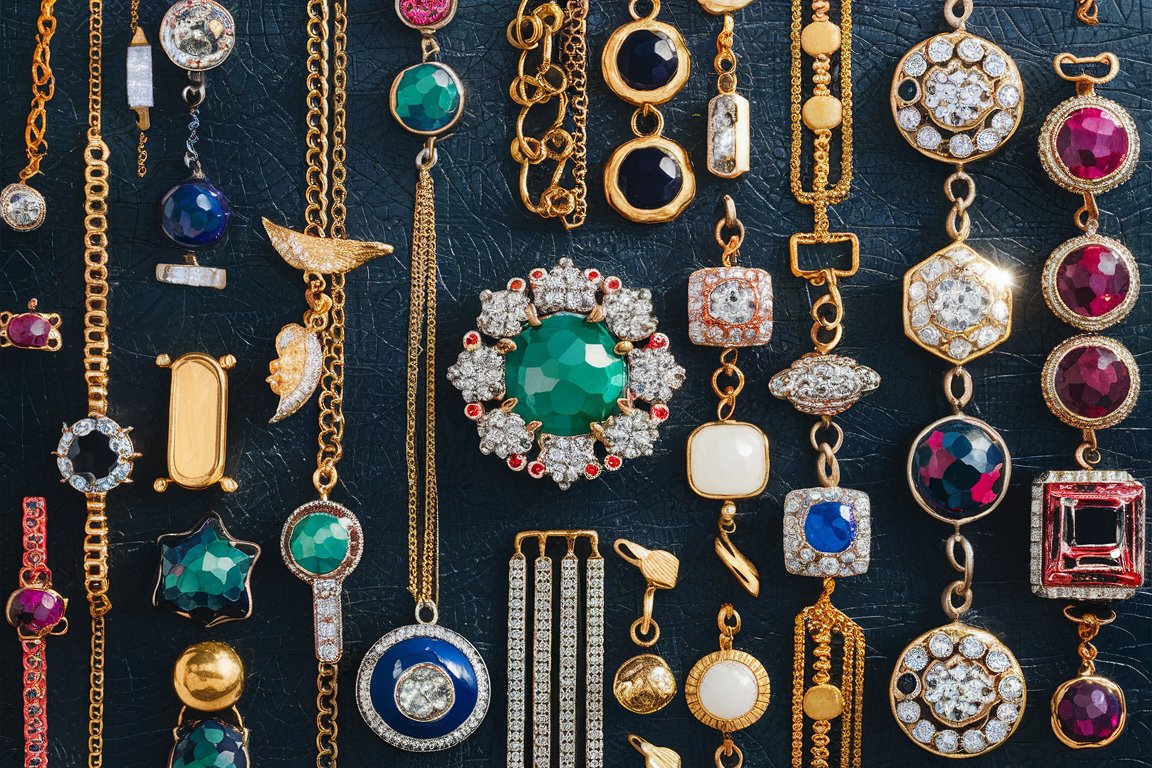How to Make the Most of Jewelry Liquidation Sales
What is Jewelry Liquidation?
Jewelry liquidation involves selling off jewelry items at significantly reduced prices. This usually occurs due to business closures, overstock clearance, or financial difficulties. Shoppers can find high-quality pieces at considerably lower prices, making these jewelry liquidation sales a haven for bargain hunters and treasure seekers. Investopedia says liquidation converts assets into cash, enabling businesses to recoup some of their financial investments quickly. It’s not just limited to small stores; even large retail chains sometimes liquidate their inventory. During these sales, you can acquire luxury items that might otherwise be out of reach financially.
Benefits of Jewelry Liquidation Sales
- Quality at a Bargain: Many liquidation sales include high-end, name-brand jewelry at discounted prices. What makes these sales particularly alluring is the combination of high quality and affordability. For instance, you might find a diamond necklace from a renowned brand at a price significantly lower than retail.
- Unique Finds: Liquidation sales often unearth unique, vintage pieces no longer in mainstream production. Imagine stumbling upon a vintage brooch or an antique ring with a history, adding beauty and a story to your collection.
- Investment Opportunities: Given their reduced prices, some jewelry items bought at liquidation sales can appreciate over time. If you have a keen eye, purchasing collectible items like limited-edition watches or rare gemstones can provide substantial returns on investment.
- Sustainability: Buying second-hand items contributes to sustainable fashion practices by reducing demand for new manufacturing. This is an eco-friendly approach, allowing you to enjoy luxury while also promoting environmental responsibility.
Tips for Shopping at Jewelry Liquidation Sales
- Research the seller to ensure they are reputable and authorized. Reading reviews or asking for recommendations can significantly reduce the chances of purchasing subpar items.
- Understand the return policy before making a purchase. Not all liquidation sales offer returns, so it’s essential to know this before finalizing your purchase.
- Bring a jeweler’s loupe to examine pieces closely. This simple tool allows you to inspect the details and condition of stones and settings, helping you make a more informed choice.
- Set a budget and stick to it to avoid impulsive buying. The allure of discounted prices can sometimes lead to overspending, so having a pre-set budget helps maintain financial discipline.
- Compare prices with other retailers to ensure you’re getting a genuine bargain. Sometimes, the perceived discount is less substantial than expected, so a quick online check can confirm if you’re truly getting value for money.
Understanding Pricing and Value
Pricing in jewelry liquidation can be tricky, as it varies greatly depending on the item’s condition, brand, and materials. It’s essential to have a basic understanding of how jewelry is valued. According to GIA (Gemological Institute of America), factors like cut, clarity, carat, and color play significant roles in determining the value of gemstone jewelry. In addition, brand reputation and historical significance can also affect prices. For instance, a gemstone with excellent cut and clarity will naturally command a higher price than one of average quality. Similarly, pieces with historical significance or those from renowned designers often carry a premium.
How to Verify Authenticity
Before purchasing, it’s crucial to verify the authenticity of the jewelry. Look for hallmark stamps, indicating the purity of metals and the brand’s legitimacy. Additionally, you can use an electronic tester to check the authenticity of gemstones and diamonds. Consulting with a certified gemologist can also provide peace of mind, ensuring your purchase is genuine. Some buyers even prefer having a jeweler accompany them during significant purchases to provide on-the-spot verification. This could be a worthwhile investment, especially considering high-value pieces.
Risks to Consider
- Potential for counterfeit or fake items. Unfortunately, not all sellers are honest, so due diligence is crucial.
- Items may be damaged or require repairs, which will cost extra money. Be prepared for the possibility of refurbishment expenses, especially with older or vintage pieces.
- Limited or no warranty on liquidation items. This means that future repairs or replacements would come out of your pocket.
- There is emotional pressure to buy quickly due to limited-time sales. The rush to secure a deal can sometimes cloud judgment, leading to impulsive, regrettable purchases. Taking a moment to breathe and reassess can help mitigate this risk.
Final Thoughts
Jewelry liquidation sales are excellent opportunities to find beautiful, unique jewelry at discounted prices. You can make informed and satisfying purchases by understanding how these sales work and following some essential tips. Always remember to verify the authenticity and be aware of the potential risks. With mindful shopping, these sales can offer some of the most rewarding finds, blending luxury with affordability. Happy hunting!
Stay in touch to get more updates & news on Stylecarter !






